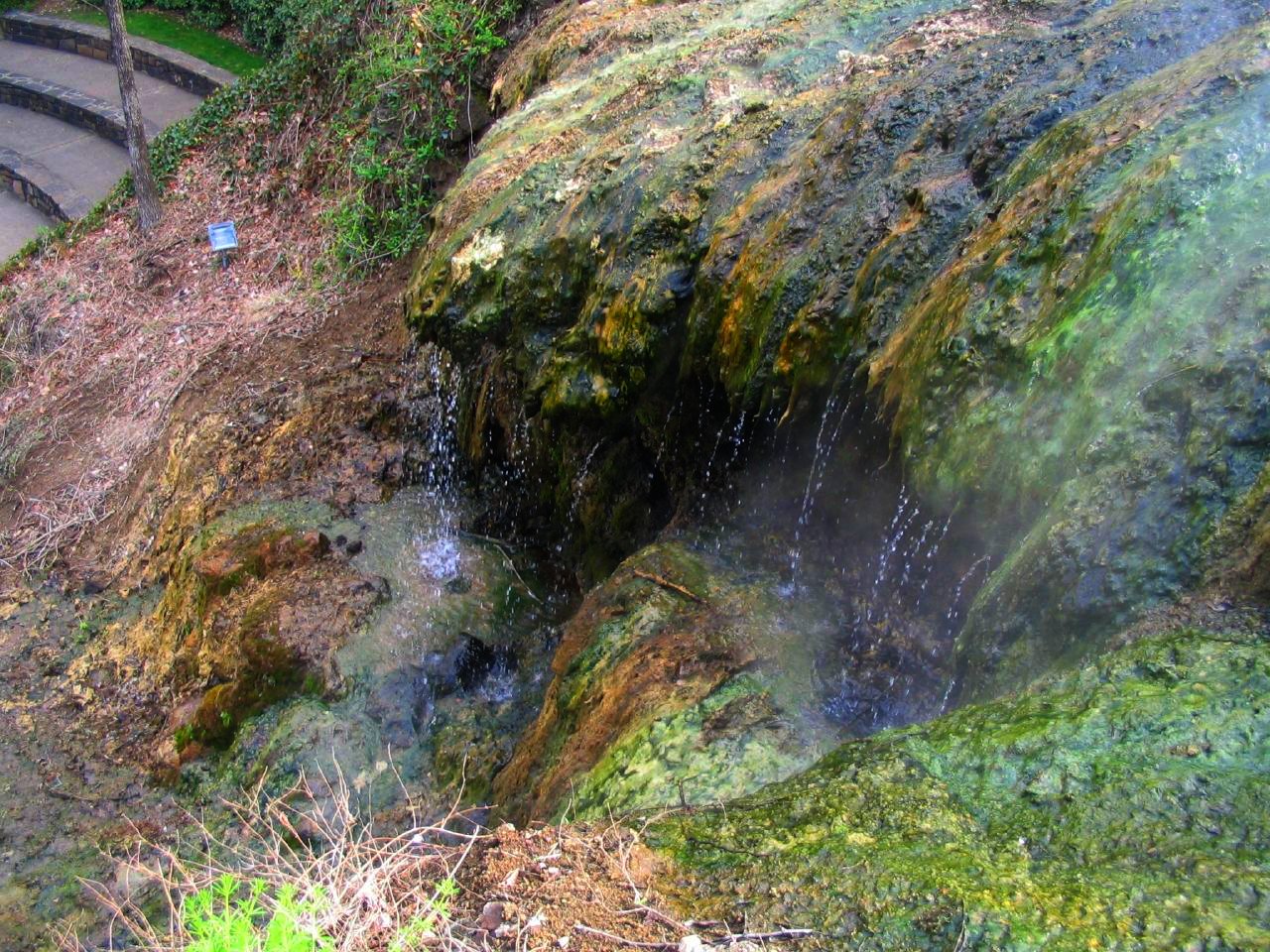 Rog is at one of the fountains in town. That water is hot. We did not go to the water fountains to drink.
Rog is at one of the fountains in town. That water is hot. We did not go to the water fountains to drink. There are 47 springs on the western slope of Hot Springs Mountain in the historic downtown district of the city. About a million gallons of 143-degree water flow from the springs each day. The rate of flow is not affected by fluctuations in the rainfall in the area. The water percolates very slowly down through the earth’s surface until it reaches superheated areas deep in the crust and then rushes rapidly to the surface to emerge from the 47 hot springs.
A small channel of hot spring water known as Hot Springs Creek runs under ground from an area near Park Avenue to Bath House Row in the downtown area.

This is inside the Fordyce Bathhouse. This is the men's bath area. It also had the most beautiful stain glass ceiling. It was the visitors center, but it is in need of renovation so until the work begins they are giving tours. This is the only way to see inside a bathhouse other than paying. We happened to arrive at the visitors center right when they were ready to go.
 This is the stain glass ceiling in the mens room of the bathhouse.
This is the stain glass ceiling in the mens room of the bathhouse. The molding this pic shows is made by molding plaster to the wall.
The molding this pic shows is made by molding plaster to the wall.
This is one of the stalls where you would bathe. It is very small with just a big tub and probably a chair to use for changing.
Bathhouse Row consisting of eight turn-of-the century historic buildings, lies within Hot Springs National Park and is managed by the National Park Service. Two of the bathhouses remain in operation: The Buckstaff and the Quapaw, which was reopened in 2008. Another bathhouse, the Fordyce, has been converted into a museum to give tourists a glimpse into the fascinating past of the city. The federally-protected, natural thermal waters are also used for thermal bathing at several downtown hotels and a hospital. The water is available free for drinking at several fountains in the downtown area. It is also available free throughout the city in the homes of the residents


 A couple of beauties here.
A couple of beauties here.
 We drove up on the mountain and looked down on Hot Springs at the tall building that once housed our wounded warriors during WWII.
We drove up on the mountain and looked down on Hot Springs at the tall building that once housed our wounded warriors during WWII.Hospital in 1942 because the hospital was not nearly large enough to hold the sick and wounded coming in. In 1944, the Army began redeploying returning overseas soldiers; officials inspected hotels in 20 cities before selecting Hot Springs as a redistribution center for returning soldiers. In August 1944 the Army took over most of the hotels in Hot Springs. The soldiers from the west-central states received a 21-day furlough before reporting to the redistribution station. They spent 14 days updating their military records and obtaining physical and dental treatment. The soldiers had time to enjoy the baths at a reduced rate and other recreational activities. The redistribution center closed down in December 1945 after processing more than 32,000 members of the military.
 This is the view of Bathhouse Row from on top of the mountain.
This is the view of Bathhouse Row from on top of the mountain.
This is a stone called novaculite that is found in the area. It is used for honing (sharping) knives.
Garvan Woodland Gardens

 Brick are from the chimney of the burned down lumber plant that was here. The bricks where 100 years old when they were placed here for this walk 40 years ago.
Brick are from the chimney of the burned down lumber plant that was here. The bricks where 100 years old when they were placed here for this walk 40 years ago.  this path is a snake like path. Notice how the wood has been treated so that it curves in the S shaped path.
this path is a snake like path. Notice how the wood has been treated so that it curves in the S shaped path. Anthony Chapel 55 foot tall glass windows offer virtually uninterrupted views of the surrounding woodlands.
Anthony Chapel 55 foot tall glass windows offer virtually uninterrupted views of the surrounding woodlands.
No comments:
Post a Comment